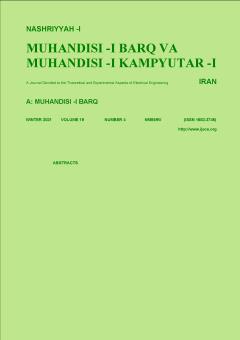Optimal Robust Controller Design for the Electrical Vehicle Charging Process in the Presence of Uncertainty
Subject Areas : electrical and computer engineering
mahsa karami
1
,
roohollah barzamini
2
*
,
reza sharifi
3
![]()
1 -
2 - Islamic Azad University Central Tehran Branch
3 -
Keywords: Electric vehicle, wireless charging, robust control, uncertainty, charging station,
Abstract :
Wireless power transmission technology with titles such as contactless power transmission, magnetic coupling power transfer, etc.are known and in fact, this method safely and reliably transmits power in such a way that does not require a mechanical connection between the source and the load. In this method, power transmission is done wirelessly using resonance induction coupling. By operating the transducer in the resonant mode, it will be possible to transfer a significant amount of power over an air distance of a few tens of centimeters, while the system efficiency is high and the voltage and current stress of the transducer are reasonable. In this paper, by presenting a method based on robust control and meta-heuristic algorithms, we improve the charging process of electric vehicles by considering uncertainty conditions. The simulation results show the better performance of the proposed controller compared to other controllers. Also, in this paper, the effect of connecting the charging station of electric vehicles to the distribution network is investigated by considering the optimal charging and discharging scheduling systems to maximize the economic profit of the vehicles and the charging station. In the proposed method, the best program for charging and discharging cars in order to maximize their profit is extracted based on genetic algorithm. According to the simulation results, optimal charging and discharging planning has reduced the value of losses to the total network energy to load the station in some trains, so that network targets such as losses and voltage deviation index are minimized and voltage stability index is maximized. In this study, minimization of losses, voltage deviation as well as maximization of voltage stability index have been investigated and the optimal location of the station has been obtained by considering these goals along with the profit of the station and vehicles. Finally, according to the results, with the planning of charging and discharging cars, in addition to providing the required charge, the profit of the station and cars has also increased.

